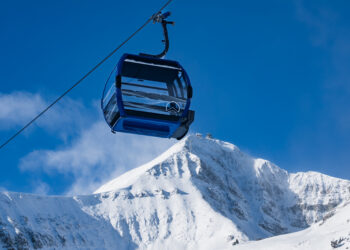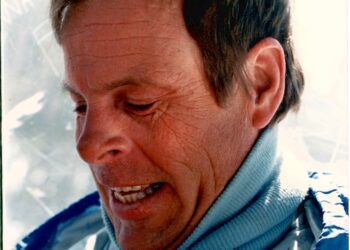By Jen Clancey STAFF WRITER
Five years after the coronavirus pandemic arrived in Big Sky, shuttering businesses and social spaces, Sarah Gaither, operations manager for the Big Sky Community Food Bank, took some time to reflect on that time of transition.
“I felt like overnight I’m now responsible for feeding the entire Big Sky workforce who have just been laid off, and I was pretty terrified of that,” Gaither recalled in a March 13 Big Sky Resort Area District board meeting.

Within 24 hours of the pandemic shutdown in March 2020, Gaither picked up her phone to see Daniel Bierschwale, executive director of BSRAD, calling. Their conversation promised an urgent response plan and a partnership for serving struggling community members that continues today. In 2024, the food bank had served more than double the number of customers it had in 2020, meeting increasing demands through partnerships in Big Sky and the region.
“[Bierschwale] assured me that … the food bank would have what it needed. Resort Tax or the Big Sky community would make sure that that would happen,” Gaither said. “It made me realize that I wasn’t facing that responsibility alone.”
In 2023-24, the food bank served 1,938 customers, distributed 68,627 pounds of food and helped 664 new households.
Each location in the Human Resource Development Council’s trio of food banks—BCFB, Gallatin Valley Food Bank and Headwaters Area Food Bank—share a challenge in meeting the needs of customers, a group of community members that seem to keep growing under high costs of living.
Leading HRDC, President and CEO Heather Grenier noted that resources like federal and state government funding were helpful during the onset of the pandemic, but in post-pandemic times the need for food access remains. She commended Big Sky’s commitment to supporting its community food bank.
“It feels like everyone understands the external pressures in the community and knows they have to be aligned on solutions for anything to be successful and be implemented,” Grenier said.
In HRDC’s half-century birthday, Grenier also discussed how the organization adjusts to changes in economy, policy and funding dollars. Facing announcements of funding cuts from the Trump administration and possible changes as the federal government adopts a budget for the upcoming fiscal year, Grenier noted plans for HRDC to remain nimble and balanced in funding.
“We’ve done a lot over the last several decades to reduce our reliance on federal funding and diversify our funding sources,” Grenier said. Over the last 20 years, HRDC has tapped into other funding sources through fundraising, revenue, and social activities, reducing federal funds portion in the budget from about 70% to less than 50%.
“You know, in 50 years we’ve weathered a lot of different federal administrations and federal priorities,” Grenier said. “And we’re typically able to adapt pretty well. Even for a large organization, we’re pretty nimble.”

Looking ahead, HRDC hopes to continue fundraising and increasing revenue to reduce reliance on federal funding to about one third of their operating budget, Grenier said.
Gaither highlighted issues like assisting the “missing middle” of residents in Big Sky, who earn too much to tap into SNAP or Medicaid benefits, but who still need to use services like the food bank to live or work in the area. But she’s also excited about upgrades coming to the food bank this summer.
Passersby can drop off produce donations in a food bank cooler at the Big Sky Farmers Market. Gaither encouraged market customers to buy one item for themselves and another for the food bank. She also hopes a new community garden plot donated by the Historic Crail Ranch will yield fresh fruits and veggies for food bank customers.
Lastly, the food bank space will also be touched up by Revitalized Restoration, a home and building restoration business in Big Sky, breathing new life into the interior of the food bank.
As visitors stream in and out of Big Sky this summer, the food bank will continue greeting customers and connecting them with resources at their location at the U.S. Highway 191 and Montana Highway 64 junction.













